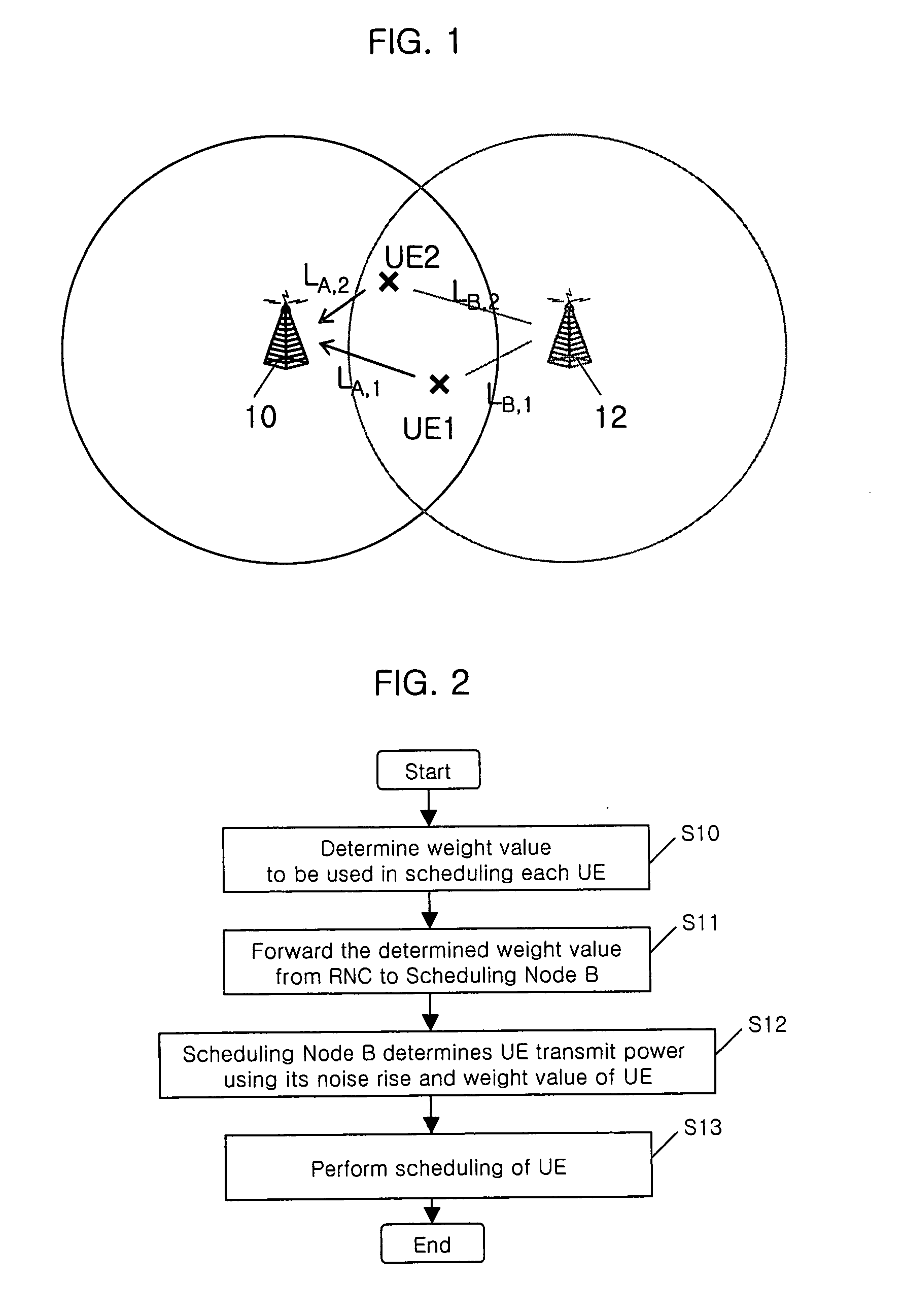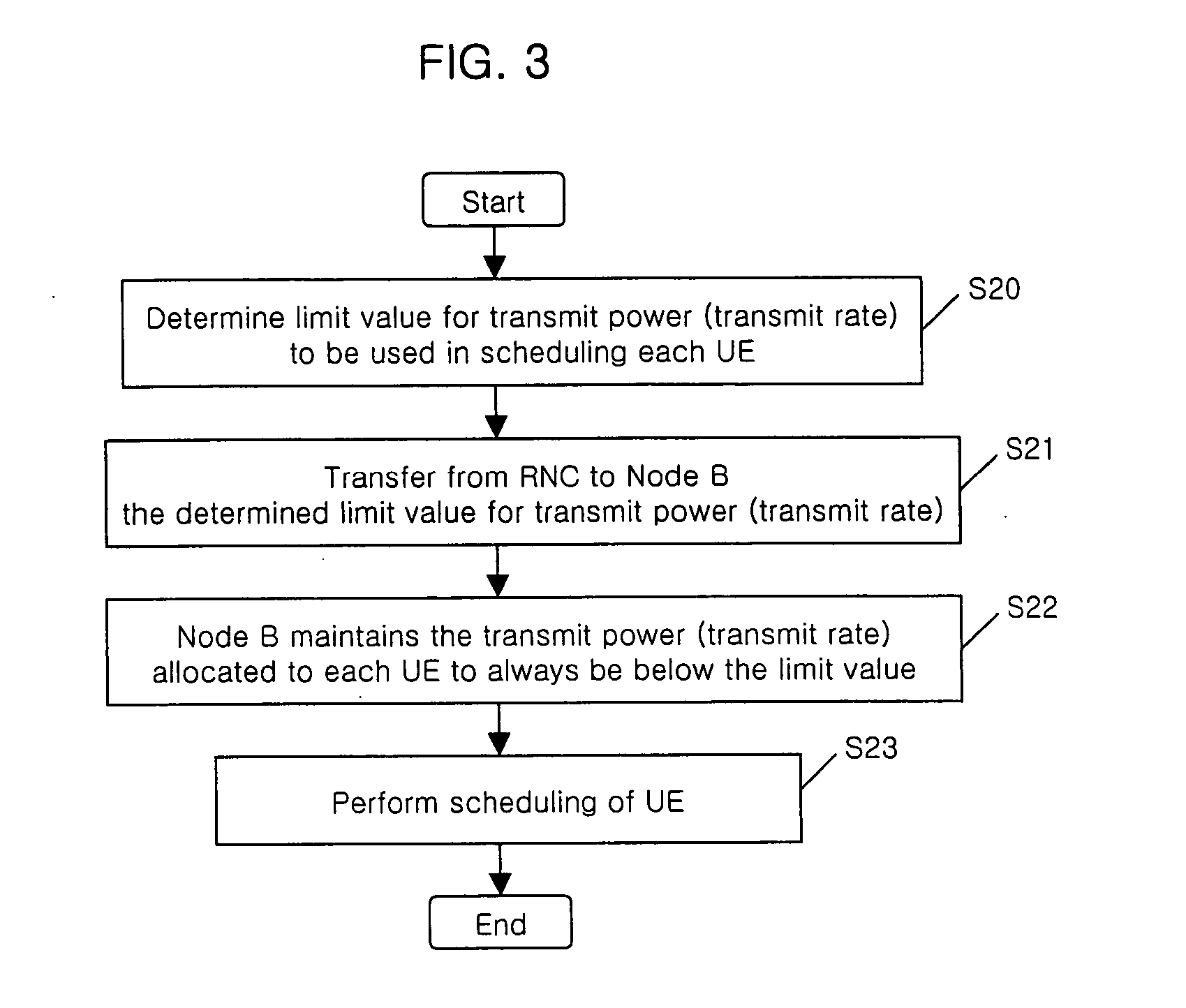Node B scheduling method for mobile communication system
- Summary
- Abstract
- Description
- Claims
- Application Information
AI Technical Summary
Benefits of technology
Problems solved by technology
Method used
Image
Examples
first example
s)
The first example of the present invention illustrates a scheduling request from a particular Node B in which credit values (or “credits”) are used in the scheduling request. Namely, in this example, the UE is in soft handover with a plurality of Node Bs, but only receives scheduling commands from one Node B. In this instance, the radio network controller (RNC), which controls one or more Node Bs, determines the credit values to be assigned each UE to reduce a variation in uplink interference so as to increase the system capacity.
In one example, the RNC determines that because the transmit power (or transmit rate) of a particular UE in soft handover causes more uplink interference to other neighboring Node Bs in soft handover that are not scheduling the particular UE, a smaller credit value is applied to the particular UE, and vice versa. That is, a smaller credit value is assigned to the UE in soft handover, to reduce the transmit power or transmit rate, for example, which thu...
second example
The second example is similar to the first example except the UE is in soft handover with a plurality of Node Bs, and a limit value is imposed on the transmit power / rate to each UE.
As shown in FIG. 3, in step S20, the RNC determines a limit value of the transmit power (or transmit rate) applied to the scheduling of each UE among all the UEs that are in soft handover with a plurality of Node Bs, and in step S21, informs the limit value of each UE to the scheduling Node B.
Thus, in steps S22 and S23, the Node B performs scheduling for each UE such that the transmit power (or transmit rate) allocated to each UE in soft handover will always be maintained below the limit value.
As in the first example, the RNC determines that because the transmit power (or transmit rate) of a particular UE in soft handover causes more interference to other non-scheduling neighboring Node Bs, a smaller limit value is applied to the particular UE, and vice versa. Also, the limit value can be determine...
third example
obability)
In the third example, the UE (rather than the Node B) determines its subsequent operation by appropriately combining scheduling requests from several Node Bs. Namely, unlike the first and second examples, the third example is applied when the UE is in soft handover with a plurality of Node Bs, and receives scheduling from all of the Node Bs. Here, all Node Bs with which a certain UE is in soft handover with, send scheduling commands to that UE and the selection of the final transmit power or transmit rate is performed by the UE.
Further, the RNC determines a selection probability of the UE with respect to each Node B in soft handover and informs this value to the UE. The selection probability refers to each Node B having a certain probability of being selected by the UE for performing scheduling.
In addition, each Node B in soft handover with the UE transmits scheduling commands to the UE according to their uplink noise rise conditions. The UE receives the scheduling co...
PUM
 Login to View More
Login to View More Abstract
Description
Claims
Application Information
 Login to View More
Login to View More - R&D
- Intellectual Property
- Life Sciences
- Materials
- Tech Scout
- Unparalleled Data Quality
- Higher Quality Content
- 60% Fewer Hallucinations
Browse by: Latest US Patents, China's latest patents, Technical Efficacy Thesaurus, Application Domain, Technology Topic, Popular Technical Reports.
© 2025 PatSnap. All rights reserved.Legal|Privacy policy|Modern Slavery Act Transparency Statement|Sitemap|About US| Contact US: help@patsnap.com



